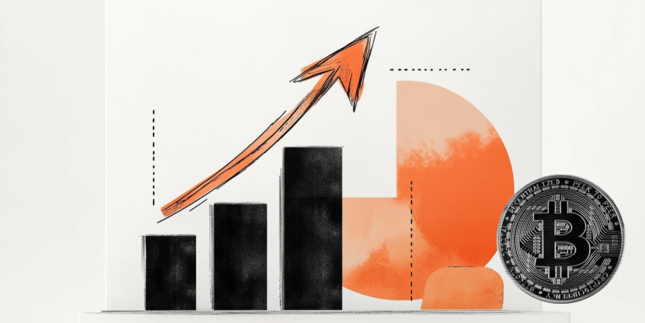Markets
Asia’s markets are set for a whirlwind Tuesday, packed with high-stakes events that could send ripples through global trading floors. Investors are juggling an Australian interest rate decision, China’s tech-driven market surge, and Japan’s red-hot GDP print—all while keeping an eye on the global political theatre.
Indeed, this isn’t just about economic data. The political undercurrent is equally electric. The unfolding drama between the U.S. and Europe over trade and security, coupled with Trump’s push for a Russia-Ukraine ceasefire, is injecting fresh geopolitical risk into the mix.
With geopolitical uncertainty swirling, this isn’t just another day at the office—markets are moving fast, and the stakes are only getting higher.
Japan’s GDP blowout has reignited yen strength, sending shockwaves through currency markets, while China’s AI-driven tech explosion continues to pull in hedge fund flows at a relentless pace. Over in Australia, all eyes are on the RBA as traders brace for a potential rate cut—one that could mark a pivotal moment for Aussie assets if the RBA leans dovish.
Throw in the broader macro landscape—where bond markets remain on edge, constantly second-guessing the fallout of a potential Trump 2.0 presidency while relentlessly recalibrating Fed rate cut expectations—and you've got a week that’s anything but predictable. Every data print, every policy hint, and every geopolitical twist is fueling a market that refuses to sit still. Volatility isn’t just lingering—it’s setting up camp.
Easing inflation has paved the way for a modest rate-cutting cycle from the Reserve Bank of Australia, but don’t expect fireworks—money markets are pricing in just 50 basis points of additional easing this year following Tuesday’s expected move. That’s a far cry from the aggressive cuts seen elsewhere, reinforcing the notion that the RBA will tread carefully.
If the RBA delivers, it will be one of the last G10 central banks to kick off rate cuts. Norway’s central bank hasn’t even started easing, and in stark contrast, the Bank of Japan is moving in the opposite direction—raising rates for the first time in decades.
Speaking of Japan, Monday’s GDP print was a shocker. The economy expanded at a blistering 2.8% annualized pace in Q4, nearly three times the consensus estimate of 1.0%. Even the most bullish forecasters had pegged growth at just 2.2%, making this a clear upside surprise.
The yen is surging, Japanese Government Bond yields are climbing, and inflation and wage growth have both come in hotter than expected. But while this fuels speculation of more BOJ tightening, policymakers will remain cautious. After decades of deflation and ultra-loose policy, they won’t hit the rate-cut accelerator too hard.
China’s market resurgence is picking up steam, with tech stocks in Hong Kong surging to a three-year high on Monday as President Xi Jinping met with the country’s top tech leaders in Beijing. The Hang Seng Tech Index has skyrocketed over 30% in just a month, a rally that’s sending a clear signal to investors.
The optics of Xi’s rare sit-down with tech executives are impossible to ignore. This isn’t just another policy meeting—it’s a calculated move, reflecting Beijing’s growing concerns over economic momentum and China’s position in the global tech race. More importantly, it marks a dramatic reversal from the brutal regulatory crackdown that crushed the sector four years ago.
For investors, the takeaway is clear: China’s leadership is throwing its weight behind tech once again. Whether this translates into long-term policy shifts or is just a short-term confidence play remains to be seen, but for now, the market is eating it up.
China’s billionaire charm offensive: Xi meets Ma
While the EU is stuck in a leadership vacuum, China is signaling a dramatic shift in its economic playbook. President Xi Jinping’s meeting with Alibaba co-founder Jack Ma and other top entrepreneurs isn’t just a photo-op—it’s a potential turning point.
For years, Beijing has cracked down on its tech giants, curbing their power in a bid to ensure absolute CCP dominance. Ma’s Ant Group was set for a record-smashing $34 billion IPO before regulators pulled the plug, triggering a wave of market uncertainty. Now, Xi’s willingness to meet with Ma suggests Beijing is rethinking its heavy-handed approach.
This is about more than just optics. China’s post-COVID recovery is stalling, and foreign investors have been hesitant to wade back into a market where government intervention looms large. If this signals a thaw in China’s regulatory freeze on private enterprise, expect a flood of optimism in Chinese equities.
Of course, the bigger question remains: Is Xi genuinely loosening the reins, or is this a carefully calibrated move to revive investor sentiment without ceding real control?
Either way, markets are watching. If China is about to roll out the red carpet for business again, the long-awaited Chinese tech rally could finally ignite.
Bottom line? The geopolitical chessboard is shifting fast. The U.S. is calling the shots on Ukraine, Europe is struggling to stay relevant, and China might just be cracking open the door for a market revival. The next few weeks could define the global investment landscape for the rest of the year.
Europe’s wake-up call: Left out, locked out, and losing relevance
Geopolitical tensions are on fire as U.S. officials prepare for high-stakes Russia-Ukraine peace talks—with Europe nowhere in sight. The snub isn’t just a diplomatic oversight; it’s a brutal reality check.
Trump’s move to bypass both Kyiv and Brussels has sent European leaders scrambling, holding a last-minute crisis summit in Paris to figure out their next steps. But let’s be real—there aren’t many. The U.S. is in control, and the EU is left filling out security questionnaires instead of shaping the deal.
At the Munich Security Conference, the message was clear: Europe needs to step up its defense game—fast. EU Commission President Ursula von der Leyen floated a proposal to exempt defense spending from fiscal constraints, while NATO chief Mark Rutte made it clear that the continent can’t rely on American protection forever. Investors got the message loud and clear—European defense stocks hit record highs as the market bets on a historic military spending spree.
For Western Europe, this is an earth-shattering realization. The old assumption—that war is something that happens “elsewhere”—has been exposed as pure fantasy. The world is shifting into a new era of hard power, and Europe is caught flat-footed.
Even if the EU finally gets serious about its security, the biggest hurdle isn’t military—it’s mental. After decades of strategic complacency, its civil defense structures were dismantled with reckless speed in the 1990s. Rebuilding isn’t just a matter of money; it’s about reversing years of self-inflicted geopolitical amnesia. The fantasy that peace is a permanent state has lulled Europe into vulnerability. The only question now is whether it will wake up before an external or internal crisis lands at its doorstep.
Europe has no seat at the table—And it’s their own fault
Europe is being cut out of Ukraine peace talks for two reasons, and both are self-inflicted.
First, their rigid, maximalist stance has made them a liability rather than a contributor. Instead of engaging in pragmatic diplomacy, Europe has insisted on an all-or-nothing approach—one that has made real negotiations impossible. Their opposition to talks isn’t just ideological; it’s actively counterproductive.
Second, Europe has willingly sidelined itself. By subordinating its geopolitical agency, it has become irrelevant—neither Washington nor Moscow sees value in its participation. The Americans don’t need them, and the Russians certainly don’t want them.
Yet Europe remains trapped in an ideological echo chamber, clinging to the illusion of influence while the real players—Trump, Putin, and now Xi—shape the global order without them.
SPI Asset Management provides forex, commodities, and global indices analysis, in a timely and accurate fashion on major economic trends, technical analysis, and worldwide events that impact different asset classes and investors.
Our publications are for general information purposes only. It is not investment advice or a solicitation to buy or sell securities.
Opinions are the authors — not necessarily SPI Asset Management its officers or directors. Leveraged trading is high risk and not suitable for all. Losses can exceed investments.
Recommended Content
Editors’ Picks

AUD/USD: Upside appears capped at 0.6300 on Trump's tariff fallout
AUD/USD struggles to build on the previous day's rebound and remains below the 0.6300 mark early Wednesday, anticipating US President Trump's tariffs announcement later in the day. However, buyers continue to draw support from China's stimulus optimism and RBA's prudence on the policy outlook.

USD/JPY holds losses below 150.00 as traders await Trump's tariffs
USD/JPY stays defensive below 150.00 in Wednesday's Asian trading as traders turn cautious ahead of Trump's reciprocal tariffs announcement. A cautious market mood and BoJ Ueda's comments underpin the Japanese Yen, keeping the pair under pressure amid a subdued US Dollar.

Gold price holds comfortably above $3,100 amid trade jitters
Gold price attracts some dip-buyers following the previous day's retracement slide from the record high amid persistent safe-haven demand, bolstered by worries about a tariff-driven global economic slowdown. Furthermore, Fed rate cut expectations and the lack of USD buying interest offer additional support to the XAU/USD.

US Government to conclude BTC, ETH, XRP, SOL, and ADA reserves audit next Saturday
Bitcoin price rose 3% on Tuesday, as MicroStrategy, Metaplanet and Tether all announced fresh BTC purchase. However, BTC price is likely to remain volatile ahead of the anticipated disclosure of U.S. government crypto holdings, which could fuel speculation in the coming days.

Is the US economy headed for a recession?
Leading economists say a recession is more likely than originally expected. With new tariffs set to be launched on April 2, investors and economists are growing more concerned about an economic slowdown or recession.

The Best brokers to trade EUR/USD
SPONSORED Discover the top brokers for trading EUR/USD in 2025. Our list features brokers with competitive spreads, fast execution, and powerful platforms. Whether you're a beginner or an expert, find the right partner to navigate the dynamic Forex market.